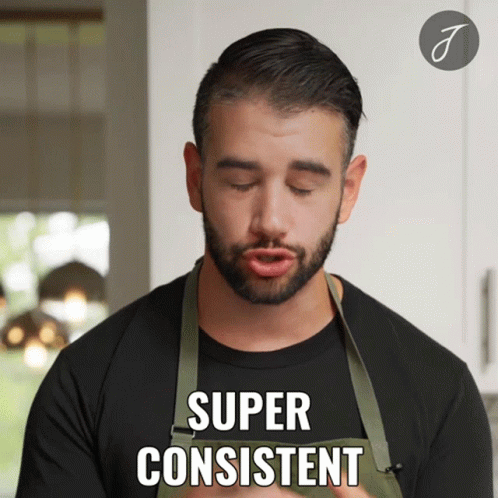To scale with width or depth?
Scale better, not just fast, because making money is important. Scale can be curse since it can multiply your losses. There are two ways to scale - increase width or depth. What's better? Let's see.
👋 Hola! Welcome to Out of Singapore. This is Shan and I am building Xandro Lab, a longevity science brand. I test, learn, and share business and marketing insights in this weekly newsletter. This is my 100th blog!!!!!!! Am I happy? Sure I am EXCITED. 😁
In the past three months, we have been able to scale. In the sense, our baseline revenue has improved and it’s growing monthly. It gives me more confidence to take on new initiatives to reach more consumers. I am always trying to grow. I have to make a daily choice between width and depth. Where should the additional revenue come?
Should it be from existing SKUs? Or
Should I launch new SKUs?
Reaching the current levels of scale has been a daily experimentation to understand consumer response. While there are a lot of ways to generate sales, it boils down to two key options
Expand product line (width)
Retain or reduce product line (depth)
I favour depth. I will tell you why, later today. Let’s structure the discussion in these segments.
What is Width and Depth?
How does it affect various industries?
Why do I prefer depth over width?
Let’s get started.
#1 What is Width and Depth?
Scaling with width means you scale with more options, meaning more SKUs. Fashion brands generally have a large width of products. For Fast-Fashion brands like Zara and H&M, width takes a whole new meaning. They launch new options, i.e. SKU, every 12 weeks. You are looking at 100-150 new options every 12 weeks (actually can be much higher). In this sort of width-dominated sales, the lifetime value of each SKU is low. Some will become successful, but they will go out of trend in 20-25 weeks. So, you need to consistently launch new options. When your business is width dominated, you will have a large number of SKUs, ranging from 500 to 1000s.
Online marketplaces, like Shopee and Amazon, are an excellent example of width dominated platforms. They generate traffic based on width (options, variety, freshness).

Scaling on depth means you focus on a limited number of SKUs and increase daily sale volume of these SKUs. Apple is a great example of depth-led brand and business - major SKUs being iPhone, MacBook, Apple Watch and Air Pods. Dyson is another depth-led brand. It creates one product and sells a million units of those each year. It does not keep launching new products every few weeks or months. Bellroy, that makes bags and wallets, can also be classified as depth-led brand.
Here is a quick summary of what these two routes provide to a business
Width - More options, Refreshing, Element of surprise, Consumers try often
Depth - Small #products, Same benefits, Same consumer, Repeat purchasers, Loyalty is needed
#2 How do these two approaches affect industries?
The two approaches are centered around consumer preferences. Fashion brands like Uniqlo and Mango have two lines of clothing -
Core - The products here stay consistent over the year, almost remaining same for years.
Season specific - These are launched and discontinued within 2-4 months and serve the needs of new trends, seasons and needs of the market.
Some industries are largely built for width, for example - fashion, jewellery, lifestyle, and home decor. In current times, social media has forced depth industries like skincare to launch a wider range frequently.
Other industries are depth focused, for example - automobile, electronics, luxury goods, Consumer goods (CPG).
Product development cycle also determines if an industry will be depth led or width led. For example, it takes years to make a new phone or laptop (from scratch). Combine that with consumers looking only for the best and not worried about everyone using the same laptop - depth becomes the driving factor. However, users would like to show their individuality in fashion and home decoration. They would do that with some electronics accessories like stickers and keyboards.
Being clear about if you are playing the width game or depth game is important as it will determine your actions.
Why?
Width-led business considerations
Gross margin on such products have to be very high (70-90%).
Marketing is focused on the story and brand. Not product.
Marketing costs are high.
Discovery of trends determines the success of the business.
Inventory production cycle has to be short (a few weeks).
Inventory liquidation is constant business situation.
Depth-led business considerations
Gross margin can be low (30-50%).
Marketing is product-led. The product is the brand.
Marketing costs reduce as you grow since repeat purchasers are high.
One product can be cash generator for several years.
Product development takes time and is slow (6 months to a year).
Inventory production cycles are longer, and can also have 6 months to 1 year lead time.
Inventory liquidation is less of a challenge, since product keeps moving. If the product is not moving, then the product needs to be discontinued and it not a depth seller.
However, some brands play both the games and do very well.
Uniqlo redefines fashion with core product lines. They drive footfall with the basic t-shirts and then sell high margin season wear in the stores.
Mobile phone brands have been launching new phones more frequently to consistently refresh the product line and stay ahead of competition.
Nike launches new sneaker style quite frequently. These are called limited sneaker drops. Same goes true for Adidas. These could be new colours or new collaboration.
So, as a brand, you need to know the fundamentals of the business and then you can play the other game. You must succeed in the basic fundamental - either depth or width - and then expand.
#3 Why do I prefer the depth play?
I started my career in a width-led business. It was a daily need to push new styles, new options and new stories. While we continued struggling to push new options, I would always notice that some options did very well. In the sense, they would sell volumes. Even within the width-game, the businesses need to look for options that can sell higher volumes. Consistently creating new options is cash intensive operation. These fashion brands have a buyer and merchandiser for almost every category. Same is true for marketplaces - the manpower needed to run the business is huge. Small teams cannot do width-led business.
Currently I run a business that’s entirely a depth play. Same product, same design, same ingredient that needs to sold consistently every day for years. I have come to the realisation that high depth, high margin businesses are the best for the long term.
I have come to favour depth-led businesses for these reasons
There is less uncertainty. The products are fixed. The product propositions are fixed. Users need the same product every month.
Cash flow is consistent. The cost of the product remains almost consistent. The suppliers remains the same. All downstream costs remain same.
Marketing costs reduce over time. Depth-led businesses are repeat heavy (same consumers buy again). So, the cost of acquisition goes down over time. Consumers also refer new consumers for the same product. This reduces CAC for new consumers as well.
Depth-led play builds a strong trust with consumers. They use the product every month, almost everyday and build a relationship with. We all love our phones, watches, perfumes and supplements.
It is easy to know if something is working or not working. If a lot of consumers are not buying the product or not coming back to repurchase, then it is an unsuccessful depth play. It means you need to move to the next product.
However, depth play can be dangerous. Several supplement brands were built on the foundation of NMN. When FDA “banned” NMN, these companies lost all of their cash flows in a few weeks. Depth-play builds dependence on a single product and regulations or PR situations can kill the entire cash flow for the business overnight.
So, there is a lot of risk with depth play as well. However, what’s a business without risk?
Thanks for reading again! Please like and share if this post resonated with you.
As always, feedback is welcome! If there is a specific topic you will like me to write on, please do share. I will try my best.
Jisoo is disappointed
I have not been eating well and sleeping late, disrupting my daily schedules. I need to fix it over the coming days.
Have a good week ahead! Cheers! 🥛🥛🥛🥛🥛






